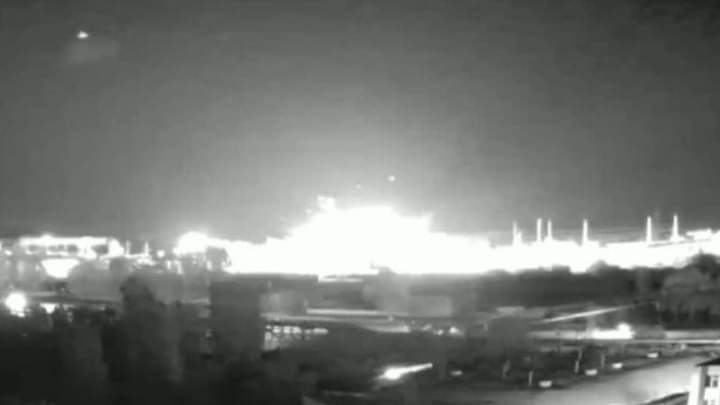NUCLEAR POWER: The Chernobyl Disaster And The Consequences Of A Nuclear Meltdown

Did you know that the Chernobyl disaster, an Ukraine nuclear accident that happened in 1986 with an estimated 4,000 human casualties cost an estimated 18 billion roubles (roughly US$68 billion in 2019) and that clean-up is scheduled for completion by 2065?
As the Russian-Ukrainian war continues with the Kremlin shelling nuclear plants in Ukraine and heightening tension of triggering another nuclear meltdown, we take a look back at the Chernobyl (Chornobyl) disaster, a nuclear accident that occurred on 26 April 1986 in the Chernobyl Nuclear Power Plant, near the city of Pripyat in the north of the Ukrainian SSR in the Soviet Union. The disaster is one of only two nuclear energy accidents rated with the maximum severity at seven on the International Nuclear Event Scale, the other being the 2011 Fukushima nuclear disaster in Japan.
The accident occurred during a safety test meant to measure the ability of the steam turbine to power the emergency feedwater pumps of an RBMK-type nuclear reactor in the event of a simultaneous loss of external power and major coolant leak. During a planned decrease of reactor power in preparation for the test, the operators accidentally dropped power output to near-zero, due partially to xenon poisoning. While recovering from the power drop and stabilizing the reactor, the operators removed a number of control rods which exceeded limits set by the operating procedures. Upon test completion, the operators triggered a reactor shutdown.
Due to a design flaw, this action resulted in localized increases in reactivity within the reactor (i.e., "positive scram"). This resulted in rupture of fuel channels, leading to a rapid decrease in pressure which caused the coolant to flash to steam. This decreased neutron absorption, leading to an increase in reactor activity, which further increased coolant temperatures (a positive feedback loop). This process resulted in steam explosions and melting of the reactor core.
The meltdown and explosions ruptured the reactor core and destroyed the reactor building. This was immediately followed by an open-air reactor core fire which lasted until 4 May 1986, during which airborne radioactive contaminants were released and deposited onto other parts of the USSR and Europe. Approximately 70% landed in Belarus, 16 kilometres (9.9 mi) away. The fire released about the same amount of radioactive material as the initial explosion.
In response to the initial accident, a 10-kilometre (6.2 mi) radius exclusion zone was created 36 hours after the accident, from which approximately 49,000 people were evacuated, primarily from Pripyat. The exclusion zone was later increased to 30 kilometres (19 mi) and an additional 68,000 people were evacuated.
Following the reactor explosion, which killed two engineers and severely burned two more, a massive emergency operation to put out the fire, stabilize the reactor, and clean up the ejected radioactive material began. During the immediate emergency response, 237 workers were hospitalized, of which 134 exhibited symptoms of acute radiation syndrome, ARS. Among those hospitalized, 28 died within the following three months, all of whom were hospitalized for ARS. In the following 10 years, 14 more workers (9 who had been hospitalized with ARS) died of various causes mostly unrelated to radiation exposure.
Chernobyl's health effects to the general population are uncertain. An excess of 15 childhood thyroid cancer deaths were documented as of 2011. A United Nations committee found that to date fewer than 100 deaths have resulted from the fallout. Determining the total eventual number of exposure related deaths is uncertain based on the linear no-threshold model, a contested statistical model. Model predictions of the eventual total death toll in the coming decades vary. The most widely cited studies by the World Health Organization predict an eventual 4,000 fatalities in Ukraine, Belarus and Russia.
Following the disaster, Pripyat was replaced by the new purpose-built city of Slavutych. The USSR built the protective Chernobyl Nuclear Power Plant sarcophagus by December 1986. It reduced the spread of radioactive contamination from the wreckage and protected it from weathering. The confinement shelter also provided radiological protection for the crews of the undamaged reactors at the site, which were restarted in late 1986 and 1987.
However, this containment structure was only intended to last for 30 years, and required considerable reinforcement in the early 2000s. The Shelter was supplemented in 2017 by the Chernobyl New Safe Confinement which was constructed around the old structure. This larger enclosure aims to enable the removal of both the sarcophagus and the reactor debris while containing the radioactive materials inside. Clean-up is scheduled for completion by 2065.
In direct response to the Chernobyl disaster, a conference to create a Convention on Early Notification of a Nuclear Accident was called in 1986 by the International Atomic Energy Agency, IAEA. The resulting treaty has bound signatory member states to provide notification of any nuclear and radiation accidents that occur within its jurisdiction that could affect other states, along with the Convention on Assistance in the Case of a Nuclear Accident or Radiological Emergency.
The Chernobyl disaster, along with the space shuttle Challenger disaster, the Three Mile Island accident, and the Bhopal disaster have been used together as case studies, both by the US government and by third parties, in research concerning the root causes of such disasters, such as sleep deprivation and mismanagement.
The initial emergency response to the disaster, together with later decontamination of the environment, involved more than 500,000 personnel and cost an estimated 18 billion roubles—roughly US$68 billion in 2019, adjusted for inflation.
Image Credit: SkyNews
Source: Wikipedia
#penglobalhistory #chernobyldisaster



